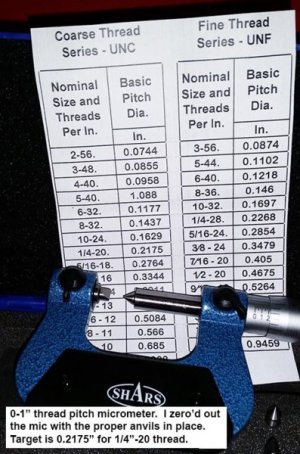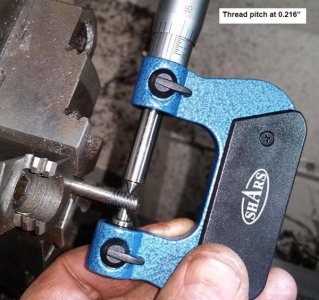H
Hukshawn
Forum Guest
Register Today
How do you calculate the compound depth for a given pitch? Trying to figure out the calculation is kicking my ass.


I've seen those and considered them. Seems easier than the wires, perhaps? The wires are much less expensive tho. Albeit, I don't know how to use them...I recall doing the 29.5 deg. calculation once or twice and having to go back over the thread with a triangular file to make it work. Typically I now run the threading tool until the thread is starting to look like a "V", then start checking with the mating part if possible. Proof in the pudding is that's where it's going to end up, so it's guaranteed to fit. If it's a standard thread, use a hardware store nut/bolt to check your thread.
The more expensive solution is use a pitch thread micrometer like those pictured below (~$60). They work great and as Tony mentioned above, dials you in dead nuts to the pitch diameter. Not that it's a "best practice", but if I'm cutting multiple threads I zero out the compound after the last finish cut. That way I'm creeping up on "0.000" on the compound instead of "0.047" or something like that.
Bruce
View attachment 143819 View attachment 143820
